New herring spawning grounds spotted from space
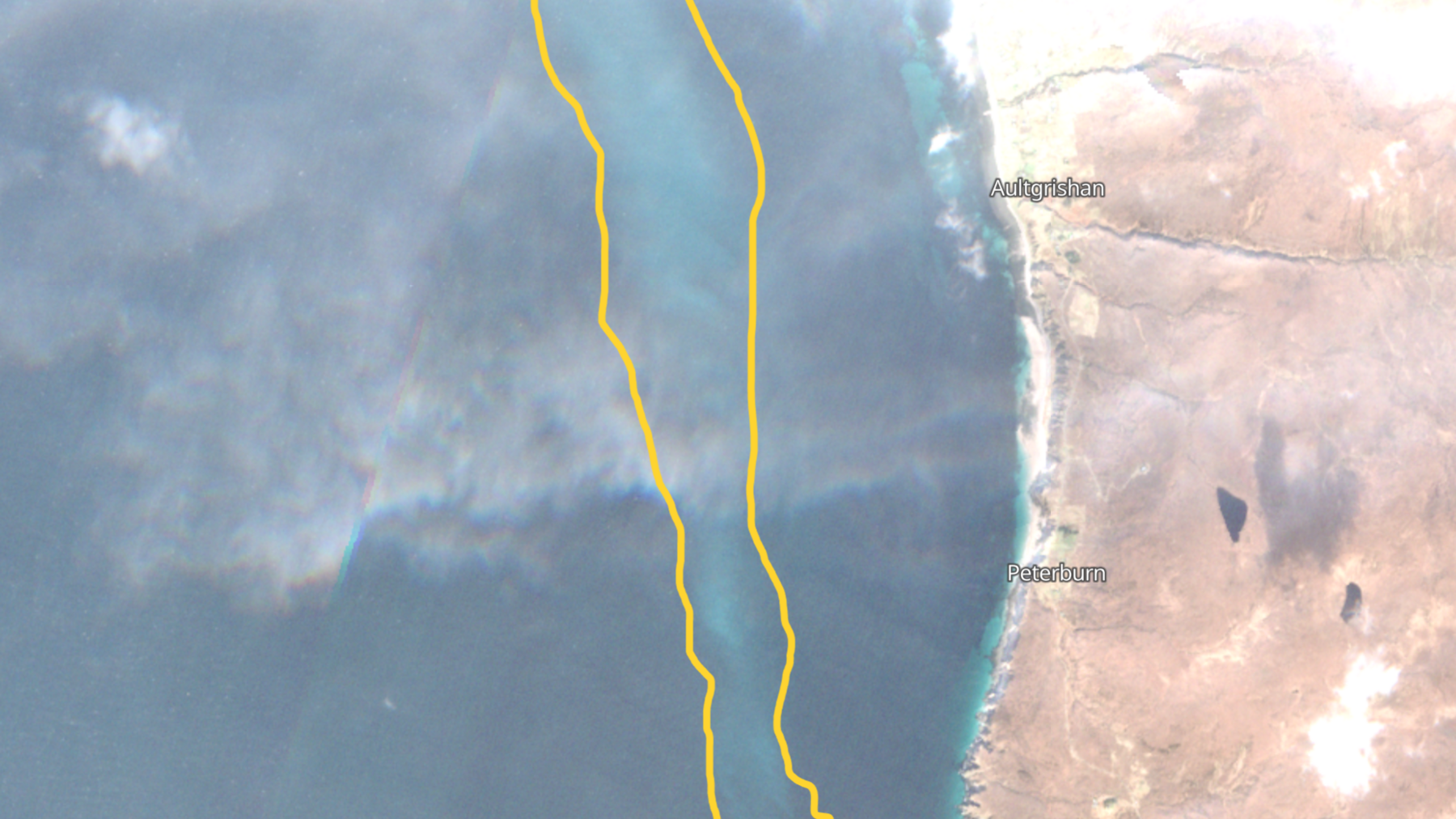
The lighter blue water contains sperm-filled milt from male herrings
- Published
A vast herring spawning ground off Scotland’s west coast has been spotted from space.
Researchers used underwater cameras to film the eggs, off Wester Ross, after light blue plumes were picked up on satellite images.
Environmentalists say the sea area where the fish have spawned needs urgent protection against damage from trawling and scallop dredging.
The Scottish government says protecting these marine features is a top priority.
Stocks of herring have started to return to some areas where they were wiped out by overfishing in the 1960s and 70s.
Climate change is also thought to have played a part in their demise as ocean temperatures alter.
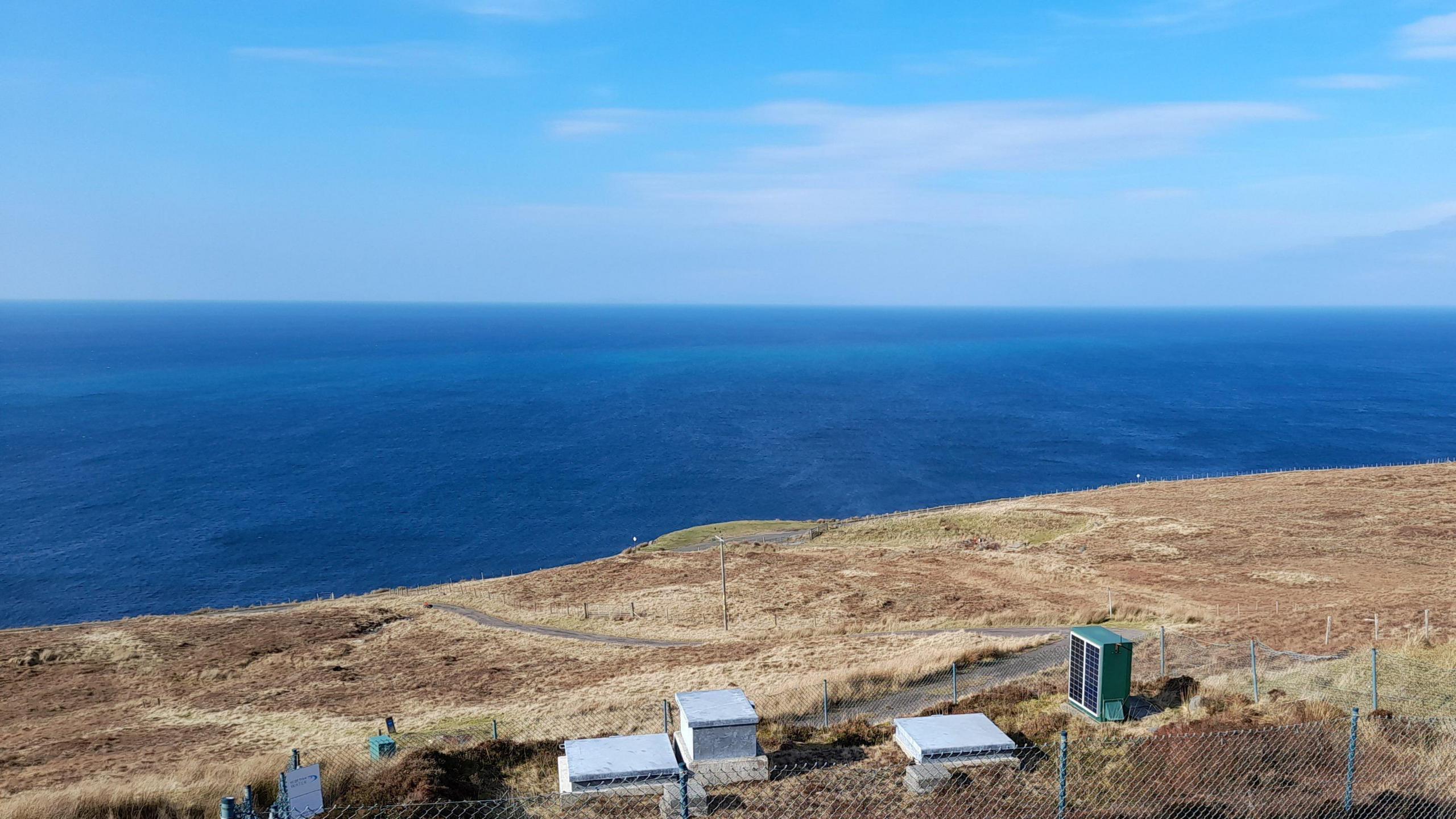
The lighter blue line in the sea indicates the spawning ground
The first suspicion that spawning had taken place came when Gairloch resident Peter Cunningham - who works for the Wester Ross Fisheries Trust - spotted unusually high numbers of birds diving in the area.
It was accompanied by a lighter blue colouration, visible from the shore, which was caused by herring sperm.
Peter contacted the environmental charity Open Seas who used open-source satellite images to pinpoint the exact location of the grounds.

Hundreds of thousands of herring form the shoals which spawn
"Just by sheer luck the satellite had gone over at around about the same time," said Peter. "The sky was clear and you can seen these marks of slightly turquoisey water."
He said that was "pretty good evidence" that the herring had spawned and so a team from Edinburgh Napier University's west of Scotland herring hunt project headed to Gairloch and deployed an underwater drone.
They picked up vast areas of eggs attached to maerl beds on the ocean floor but the find was confirmed when the drone resurfaced covered in herring eggs.
Dr Michelle Frost from Edinburgh Napier University said spotting the spawning event from space was incredibly rare.
She explained: "It allowed us to pinpoint exactly where the spawning grounds are and this is something we've struggled with for many years.

Eggs are attached to mearl on the higher peaks caused by waves
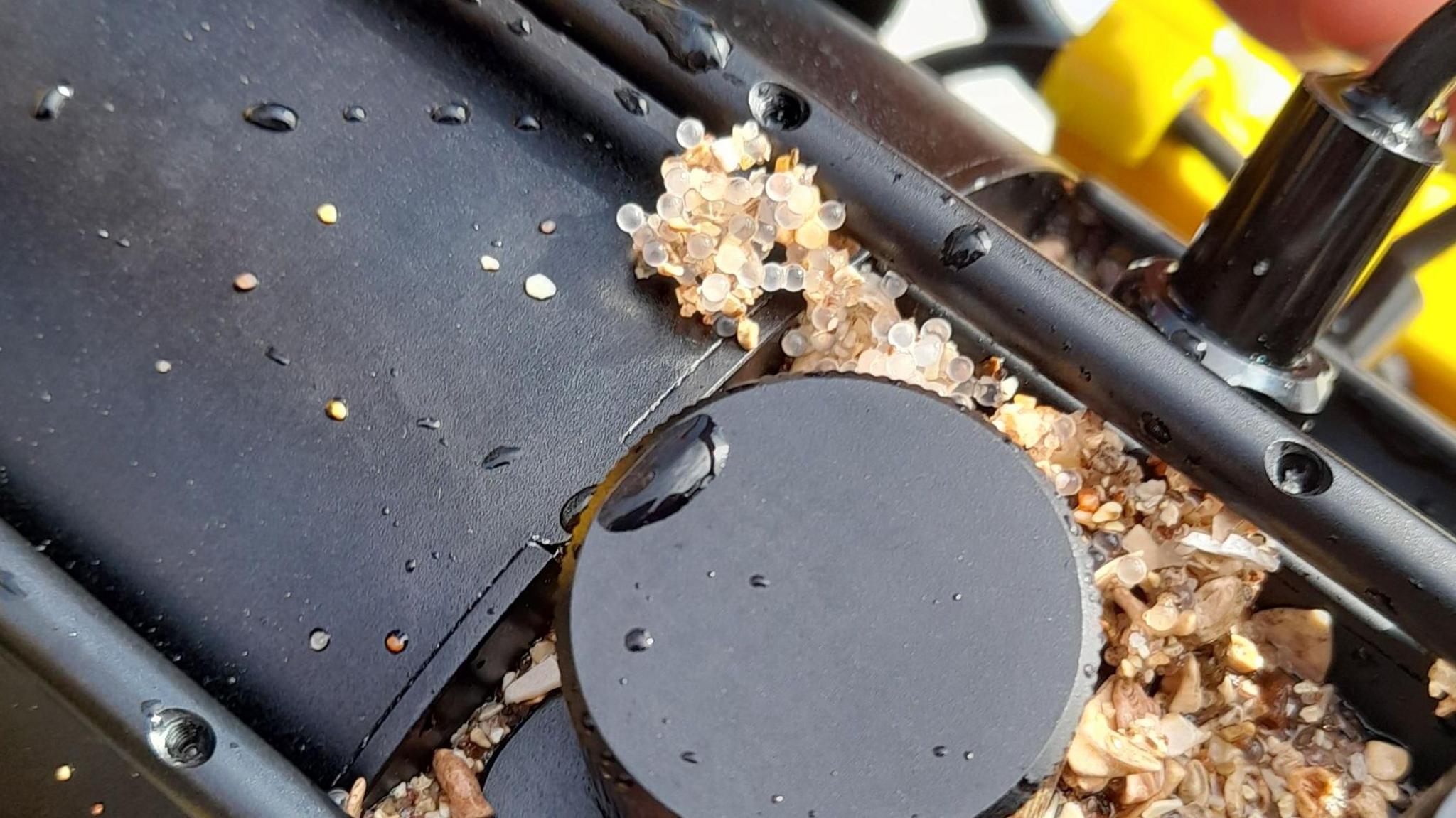
Eggs attached themselves to an underwater drone exploring the grounds
A spawning event took place in 2018 south of Gairloch in an area which was already protected from damaging fishing.
Local people believe the new area - off North Erradale - was historically a traditional spawning ground but activity has not been spotted in the water for many decades.
Environmental DNA samples will now be taken from the sea to help them learn more about the spawning behaviour.
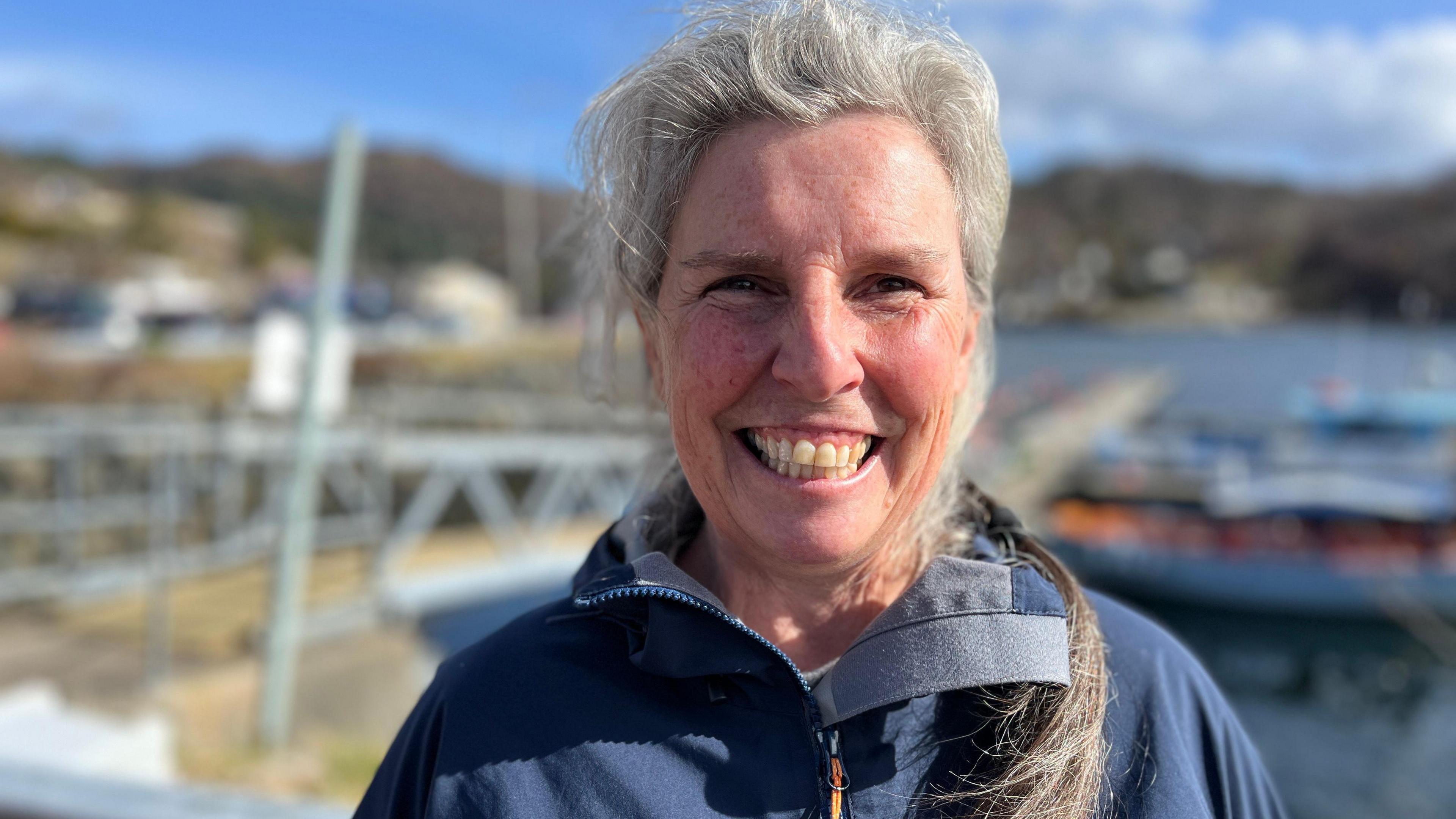
Botanist Sue Pomeroy said it was amazing to see the herring eggs
Botanist Sue Pomeroy from Little Loch Broom Marine Life was responsible for the underwater drone, taking it to depths of around 20 metres in search of the eggs.
On the first few dives they found nothing but spotted gannets diving into the water close by.
After relocating, they tried again and struck lucky.
She said: "The realisation hit me. There was acres of it, just as far as they eye could see."
When the drone returned to the surface it was covered in eggs which confirmed their existence conclusively.
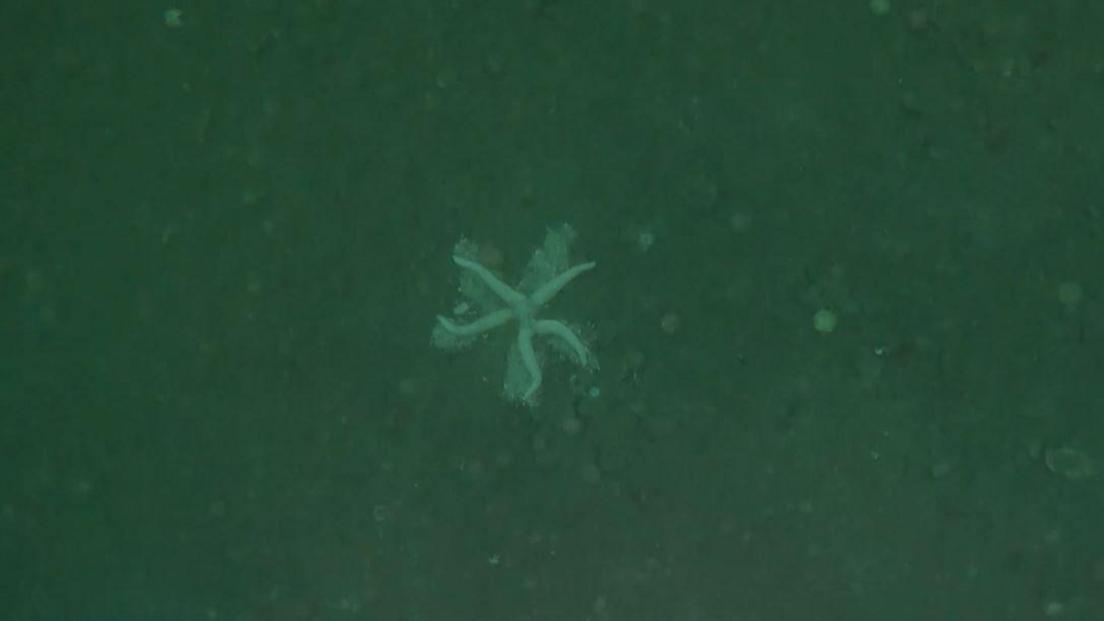
The lighter area around the starfish shows where the eggs have been eaten
Open Seas has now called on the Scottish government to take immediate action to close the area to fishing boats.
Ministers had already earmarked the site for protection but it has never been introduced.
Nick Underdown from Open Seas said: "Six years after this very area was identified we are still waiting for protection so we'd like to see this area urgently protected for the future health of fish populations."
Open Seas has recently begun a legal challenge against Scottish ministers who they accuse of failing to protect marine habitats.
A Scottish government spokesman said measures to protect the most vulnerable marine habitat sites were implemented in 2016.
He added that putting in place the remaining fisheries management measures to protect priority marine features "remains a top government priority."
Related internet links
- Published27 March 2018
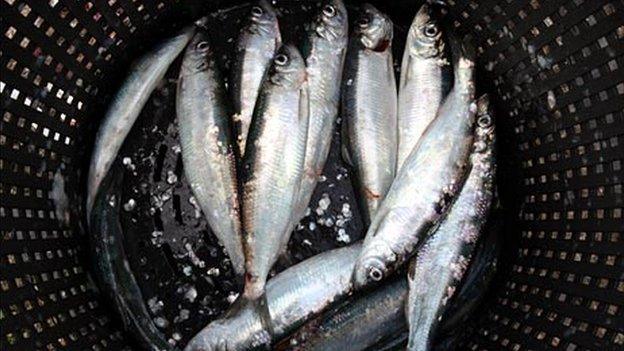
- Published28 August 2013